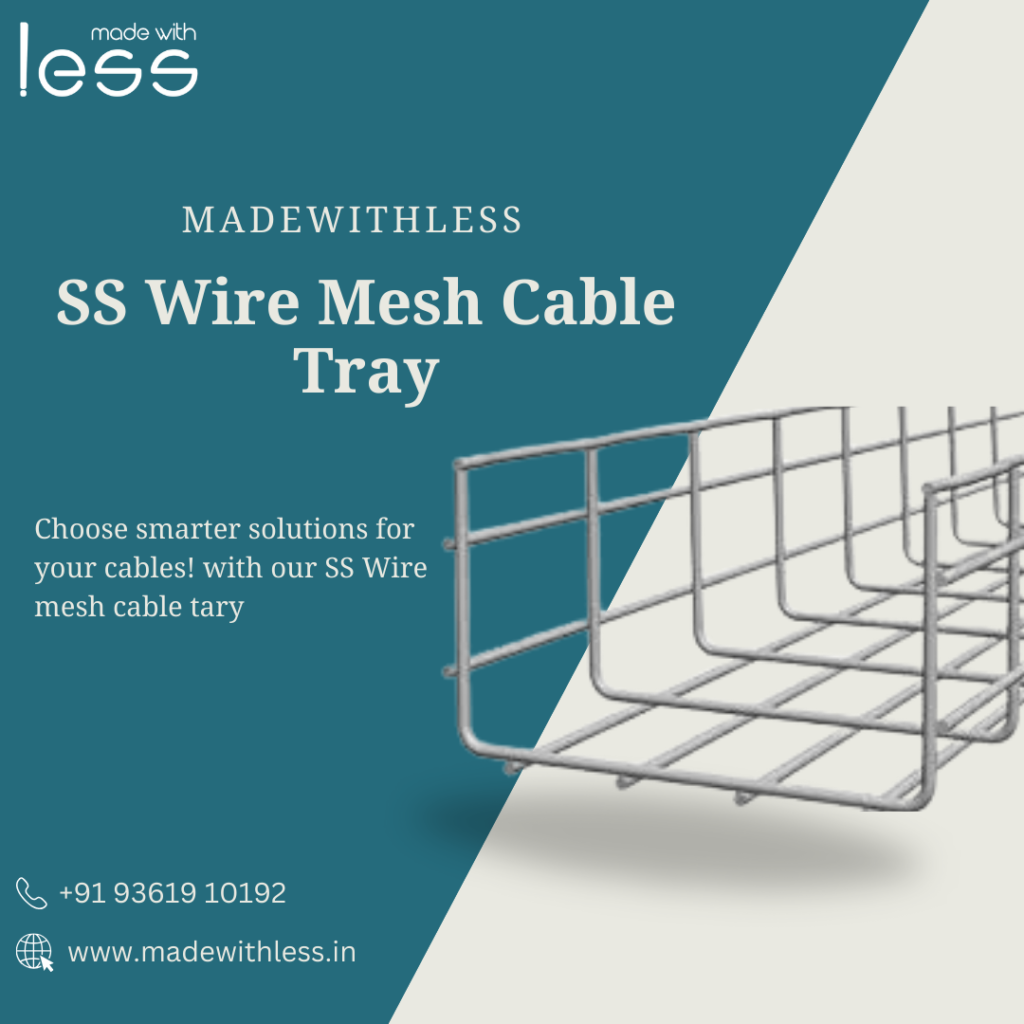Efficient cable management is the backbone of any organized infrastructure, whether a data centre, industrial plant, or commercial building. Among the most common solutions are wire mesh cable trays and perforated cable trays. Both serve the purpose of supporting and organizing cables, but they differ significantly in design, functionality, and applications. In this blog, we pit these two contenders against each other to determine the smarter choice for modern cable management.

Round 1: Ventilation
- Wire Mesh Trays: The open-grid design of wire mesh trays ensures superior ventilation. This feature prevents heat build-up, a critical factor for maintaining the performance and longevity of power and data cables.
- Perforated Trays: While they have slots or holes for ventilation, their limited openness restricts airflow, making them less effective at heat dissipation.
Winner: Wire Mesh Trays
Round 2: Installation Ease
- Wire Mesh Trays: Lightweight and flexible, wire mesh trays are easy to handle and install. They can be cut and shaped to fit complex cable routing paths, reducing labor costs and installation time.
- Perforated Trays: Heavier and less flexible, perforated trays require more effort and precision during installation. They are less adaptable to unique configurations.
Winner: Wire Mesh Trays
Round 3: Durability and Maintenance
- Wire Mesh Trays: Made from galvanized or stainless steel, wire mesh trays offer excellent corrosion resistance, making them suitable for harsh environments. Their open design allows for easy inspection and maintenance of cables.
- Perforated Trays: These trays are also durable but may be prone to corrosion if not properly coated. Due to their enclosed design, maintenance can be more challenging
Winner: Wire Mesh Trays
Round 4: Cost Efficiency
- Wire Mesh Trays: Generally require less material and are easier to install, leading to reduced costs for both materials and labor.
- Perforated Trays: The solid structure and additional materials make them heavier and more expensive, both in purchase and installation.
Winner: Wire Mesh Trays
Round 5: Applications
- Wire Mesh Trays: Ideal for environments requiring high airflow and easy access, such as data centres, commercial spaces, and industrial plants.
- Perforated Trays: Suitable for applications needing additional cable protection or where exposure to external elements is a concern.
Winner: It depends on the specific application, but wire mesh trays are more versatile overall.
Final Verdict
When comparing wire mesh cable trays to perforated trays, wire mesh comes out on top for most applications. Their superior ventilation, flexibility, ease of installation, and cost efficiency make them the smarter choice for modern cable management.
While perforated trays have their niche, especially for added cable protection, wire mesh trays provide a robust, adaptable, and future-proof solution for various industries.
Ready to choose smarter cable management? Wire mesh trays are the way to go!
